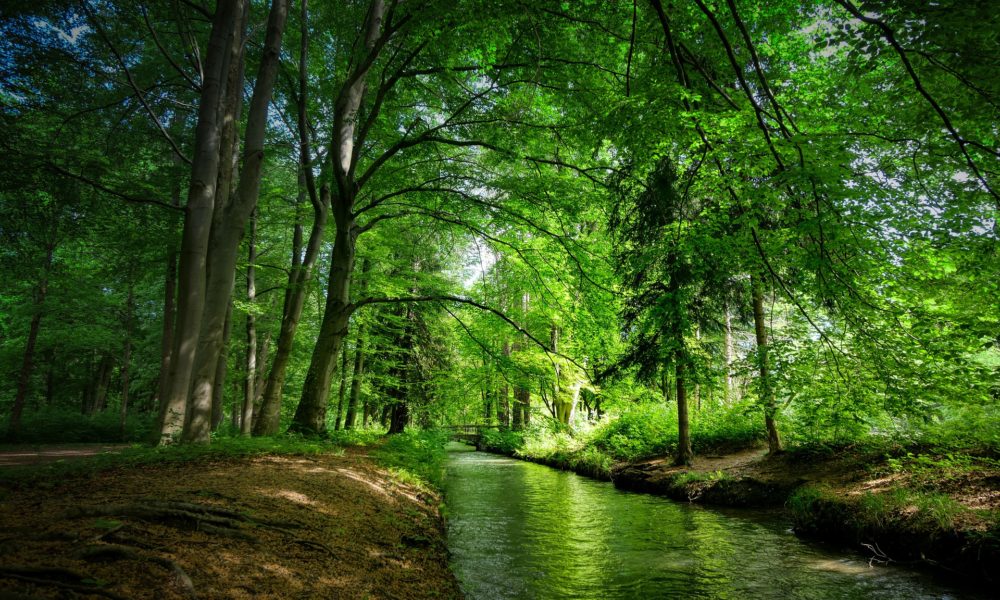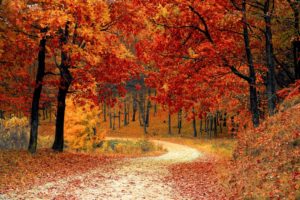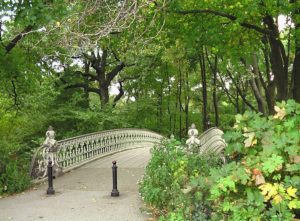
Forests to Foster Fitness
Have you ever heard of forest therapy or forest bathing? Do you know anything about phytoncides? These are all about making you healthier in an incredibly simple way.

Autumn forest path (Creative Commons CC0)
Forest therapy is “healing and wellness through immersion in forests and other natural environments.” It’s about allowing your body and psyche to be at peace in the woods. That’s all it takes to reduce stress and enhance your physical and mental well-being.
The Forest Therapy Association of the Americas is developing sites in Canadian and US forests where people can go on guided walks with experts on forests and healthcare. The “visitors to some of the therapy bases and roads have the option of taking part in various health programs, including medical checkups, breathing and aromatherapy classes.” Regarding “forest bathing,” the Association describes it simply as “taking a walk in a forest.” There’s no real need for a guide or particular exercises to enjoy the advantages. It’s a matter of consciously connecting with the natural environment.
When anyone walks in a forest, they are exposed to phytoncides, which are volatile organic compounds that have “antimicrobial, antibacterial and antifungal qualities that defend plants against insects, animals, diseases and decomposition, by creating a protective microclimate around them,” according to an article about how plants can save humans. By breathing in these airborne chemicals, “our bodies respond by increasing the number and activity of a type of white blood cell called natural killer cells or NK. These cells kill tumor- and virus-infected cells in our bodies,” affirms the New York State Department of Environmental Conservation. The results of much research confirm that spending time outdoors and in forests makes people healthier.
So phytoncides account for some of forest bathing’s health benefits, but there’s even more to be gained from walking in forests and wooded areas. Studies in Japan have demonstrated that compared to city environments, “forest environments promote lower concentrations of cortisol [the body’s main stress hormone], lower pulse rate, lower blood pressure, greater parasympathetic nerve activity [nerves that promote relaxation], and lower sympathetic nerve activity [associated with ‘fight or flight’ reactions to stress].” And the calmness, the soothing effects of the scenery, the bubbly sounds of streams and waterfalls, the cheerful chirping and singing of birds, and the smell of wood, plants and flowers all contribute to the feeling of well-being. Certainly the plants play a role in the higher concentration of oxygen there than in urban settings.

New York Central Park (Creative Commons CC0)
The exposure to forests also strengthens our immune system, increases energy, boosts our mood, improves sleep, and helps us regain and maintain our focus in ways that treeless environments do not.
So how much walking in forests is needed to reap the health benefits of forest therapy or bathing? As little as 20 minutes is enough to produce positive changes in the body. In his book, Forest Bathing: How Trees Can Help You Find Health and Happiness, expert in forest medicine Dr. Qing Li suggests not hurrying. “Slow walking is recommended for beginners. And it’s good to spend as much time as possible. You’ll notice positive effects after twenty minutes, but a longer visit, ideally four hours, is better.”
Forest bathing is practised in many countries. According to National Geographic, the therapy, called shinrin-yoku (“forest bathing” or “taking in the forest atmosphere”), was developed in Japan in the 1980s. This ecotherapy, a formal word for therapeutic treatment that involves doing outdoor activities in natural settings, can be enjoyed almost anywhere there are trees and nature. Besides in Japan, a clearly defined sequence of events with certified forest therapy guides that provide structure to the experience is proposed in the Adirondack Mountains of New York, Costa Rica, Hawaii, Hong Kong, India, Italy, Kenya and New Zealand, to name just a few forest therapy hubs.
What could be easier for most people than to enhance their health by walking in the woods or even in a city park. According to Dr. Li, connecting with nature is simple. “All we have to do is accept the invitation. Mother Nature does the rest.”

